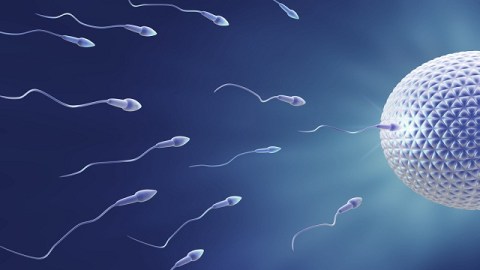The “Magical” Properties of Semen

Several years ago, a SUNY Albany study linked unprotected sex with elevated mood in college-aged women. The researchers surveyed nearly 300 female students about both their sexual practices and their mood. The results were striking — women who reported engaging regularly in oral sex or unprotected sexual intercourse reported as being happier (as measured by the Beck Depression Inventory) than those who used condoms during intercourse or abstained from sex altogether.
The authors suggested that semen might be a natural mood-elevator. After all, it contains chemicals like estrone, oxytocin, cortisol, serotonin and melatonin, stuff that is linked to better mood, increased affection and better sleep. Yet, they knew that they could not claim causality. Even the study’s title, “Does Semen Have Anti-Depressant Properties?” left the result as more of an interesting question than a foregone conclusion.
Yet that didn’t stop the media from running with the idea that bareback sex might be the cure for what ails you. They heralded semen as Mother Nature’s natural anti-depressant–you can imagine the fun blog posts and late night talk show jokes. And for some reason, just this week, the study has gotten a new set of legs–and is being reported again on sites like Gawker.
I can only think it’s because a new study from University of Saskatchewan scientists suggests that semen can “magically” trigger ovulation.
While the SUNY Albany study offers a lot more questions than answers (for example, are women who are having unprotected sex more likely to be in long-term relationships or involved in some other activity that might explain that correlation with elevated mood?), the Saskatchewan project gives us some harder science to ponder.
Gregg Adams, lead author of the paper, discovered that a protein called the ovulation-inducing factor (OIF) sends a signal to the female brain to release hormones. Those hormones then set up the body to ovulate, no matter where in her cycle that female might be. He first saw it 10 years ago in camels. And since this protein is also one that’s been shown to play an important role in normal neuron function, he was intrigued.
Adams and colleagues have now shown that this protein helps to stimulate ovulation in other mammals including llamas, koalas, rabbits and cats, elegantly documenting how OIF signals the brain to cue up ovulation.
I find this study very interesting (and, as a woman, admittedly, vaguely frightening). This work, of course, has potential implications for our understanding of fertility and infertility–and may also identify new targets for contraception. It might also explain a lot of so-called “Ooops” babies.
So I’m not sure I’d go so far as to say that semen contains some bit of “magic,” as some media mentions have suggested. Yet I think these studies suggest that biology often has tricky little back-up plans in place to ensure, one way or another, we successfully reproduce. What do you think?
Credit: Peeradach Rattanakoses/Shutterstock.com




